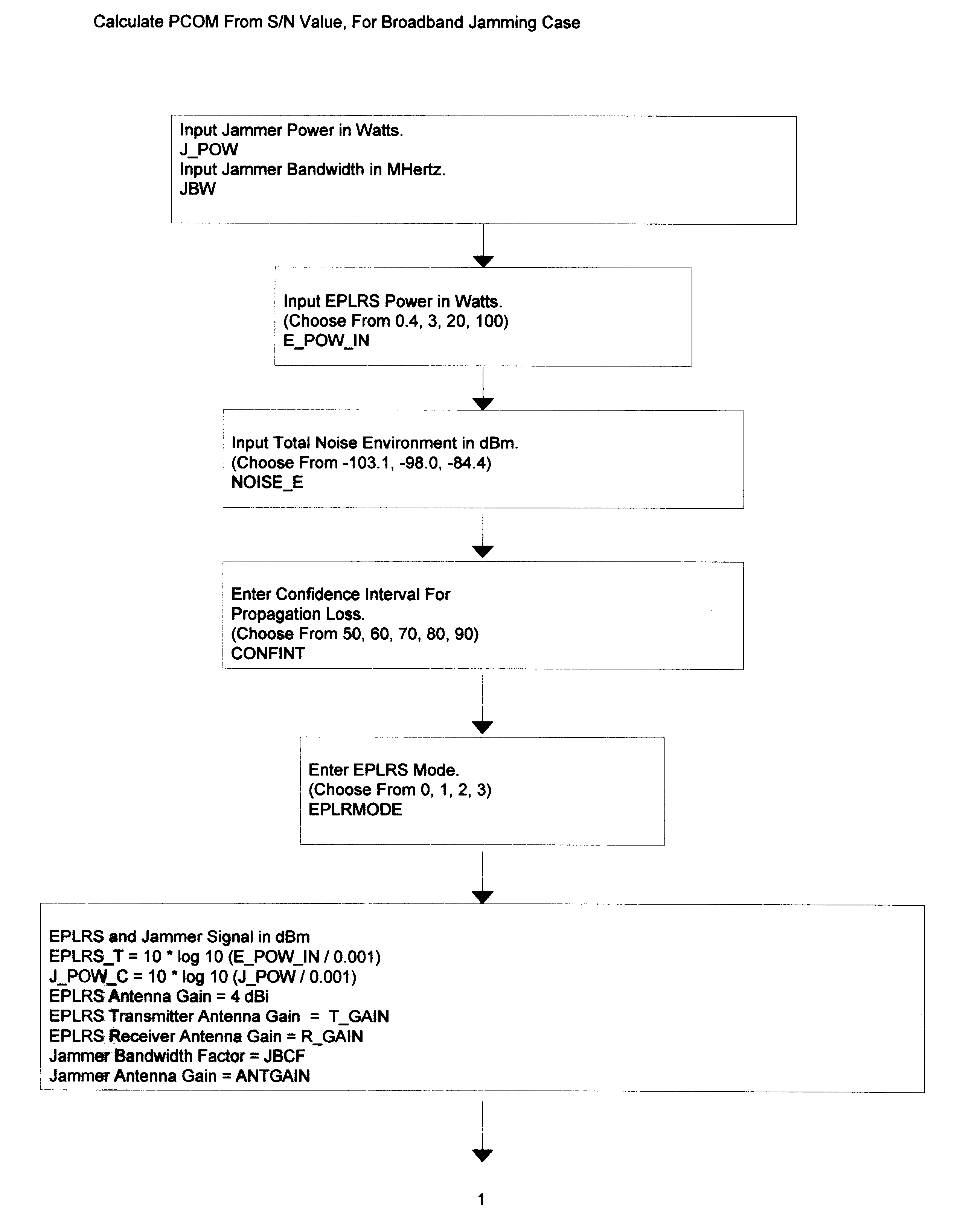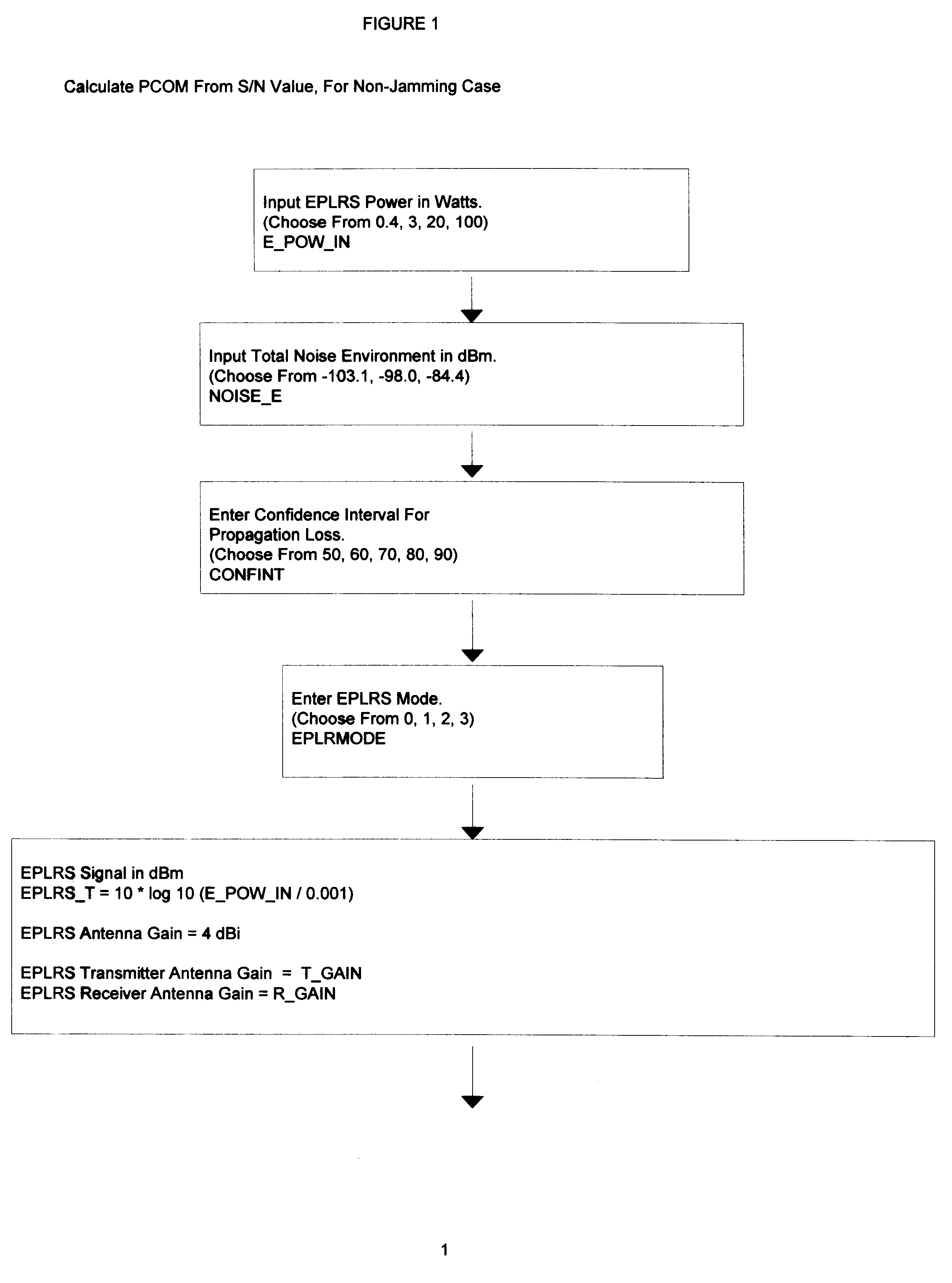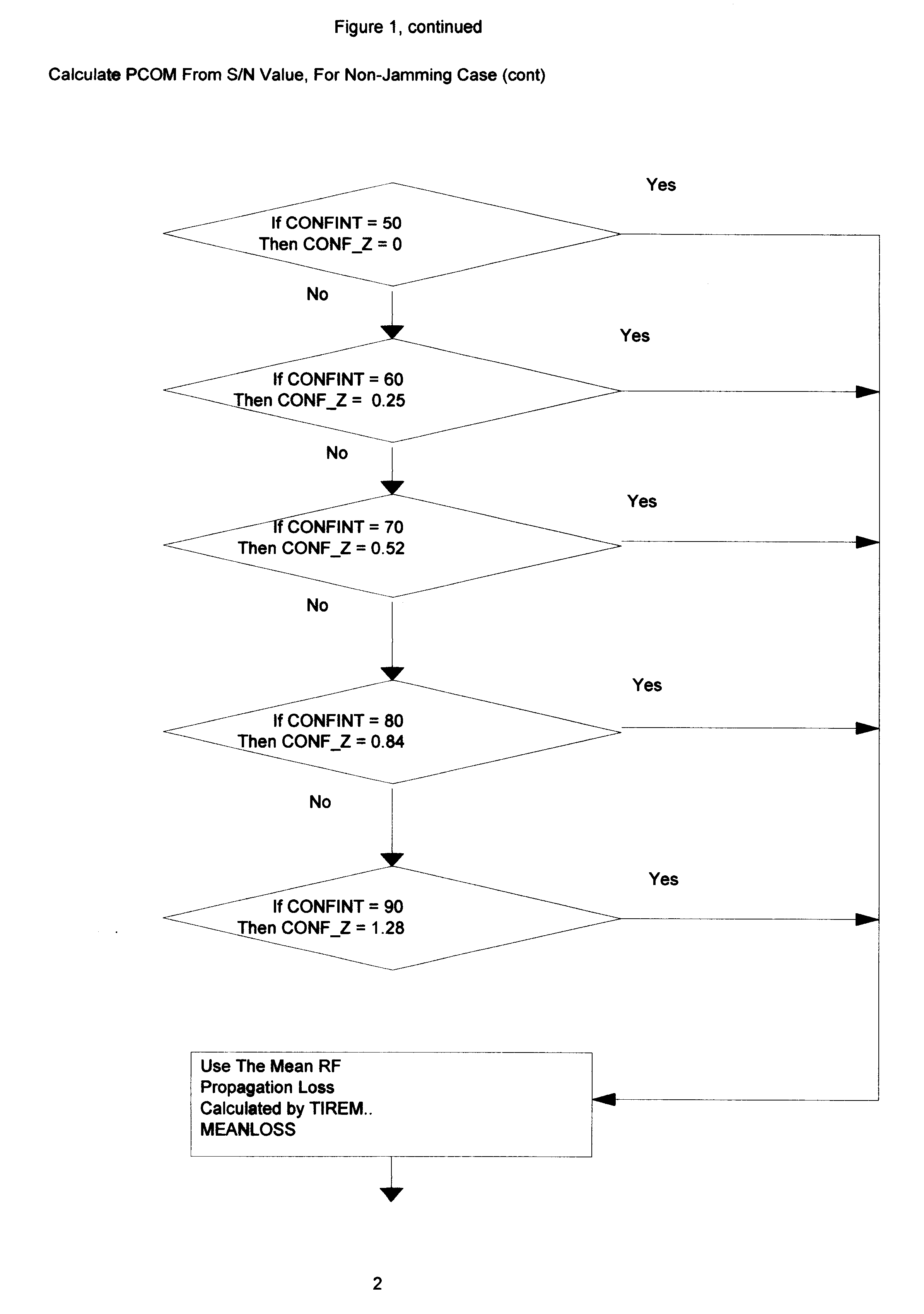Communication network optimization tool
a technology of communication network and optimization tool, applied in the field of digital radio frequency (rf) links, can solve the problems of difficult to model with great accuracy, model is not able to account for many situations, and miscalculation of rf link propagation loss
- Summary
- Abstract
- Description
- Claims
- Application Information
AI Technical Summary
Benefits of technology
Problems solved by technology
Method used
Image
Examples
Embodiment Construction
The EPLRS Probability of Communication (PCOM) analysis tool defines a set of processes that are used to determine each EPLRS RF link performance. This performance is based a various statistical algorithms which determine the PCOM of a single EPLRS pulse over a single RF link in one direction. This PCOM is a function of the S / N ratio described above. The flow charts describing the processes are contained in FIG. 1 "Calculating PCOM From An S / N Value, For Non-Jamming Case" and FIG. 2 "Calculating PCOM From An S / N Value, For Broadband Jamming Case." There are three major functions that can be characterized by statistical algorithms, namely:
RF propagation loss;
Total environment noise (other then jamming); and
PCOM value generated for each of the four EPLRS modes of operation, given the noise value with, and without, jamming.
FIG. 1, sets forth a preferred embodiment for calculating PCOM From S / N Value, For Non-Jamming Case and describes the basic algorithms for calculating a PCOM given th...
PUM
 Login to View More
Login to View More Abstract
Description
Claims
Application Information
 Login to View More
Login to View More - R&D
- Intellectual Property
- Life Sciences
- Materials
- Tech Scout
- Unparalleled Data Quality
- Higher Quality Content
- 60% Fewer Hallucinations
Browse by: Latest US Patents, China's latest patents, Technical Efficacy Thesaurus, Application Domain, Technology Topic, Popular Technical Reports.
© 2025 PatSnap. All rights reserved.Legal|Privacy policy|Modern Slavery Act Transparency Statement|Sitemap|About US| Contact US: help@patsnap.com



